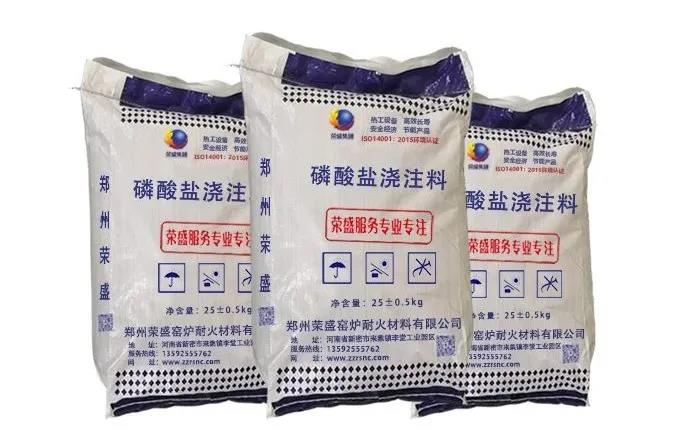Phosphate castable refers to a castable combined with phosphoric acid or phosphate, and its hardening mechanism is related to the type of binder used and the hardening method.

The binder of the phosphate castable can be phosphoric acid or a mixed solution of aluminum dihydrogen phosphate produced by the reaction of phosphoric acid and aluminum hydroxide. Generally, the binder and aluminum silicate do not react at room temperature (except for iron). Heating is required to dehydrate and condense the binder and bond the aggregate powder together to obtain the strength at room temperature.
When coagulant is used, heating is not required, and fine magnesia powder or high alumina cement can be added to accelerate coagulation. When magnesium oxide fine powder is added, it reacts quickly with phosphoric acid to form, causing refractory materials to set and harden. When aluminate cement is added, phosphates with good gelling properties, water-containing phosphates such as calcium monohydrogen phosphate or diphosphate are formed. Hydrogen calcium, etc., cause the material to condense and harden.

From the hardening mechanism of phosphoric acid and phosphate refractory castables, it is known that only when the reaction rate between the cement and the refractory aggregates and powders is appropriate during the heating process can an excellent refractory castable be formed. However, the refractory raw materials are easily brought into the process of pulverization, ball milling and mixing. They will react with the cementing agent and release hydrogen during mixing, which will cause the refractory castable to swell, loose the structure and reduce the compressive strength. This is unfavorable for the production of ordinary phosphoric acid and phosphate refractory castables.
Post time: Nov-04-2021
